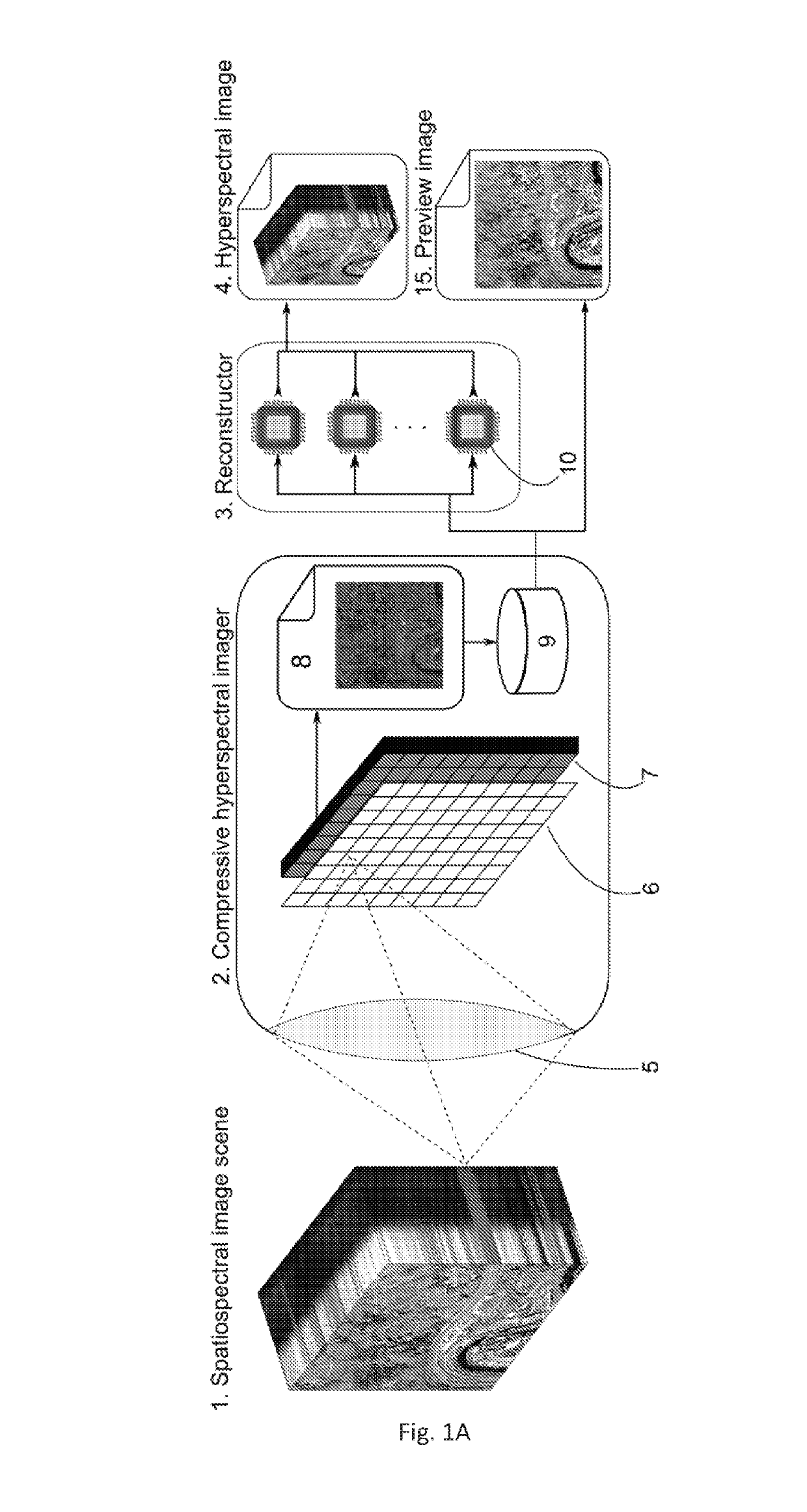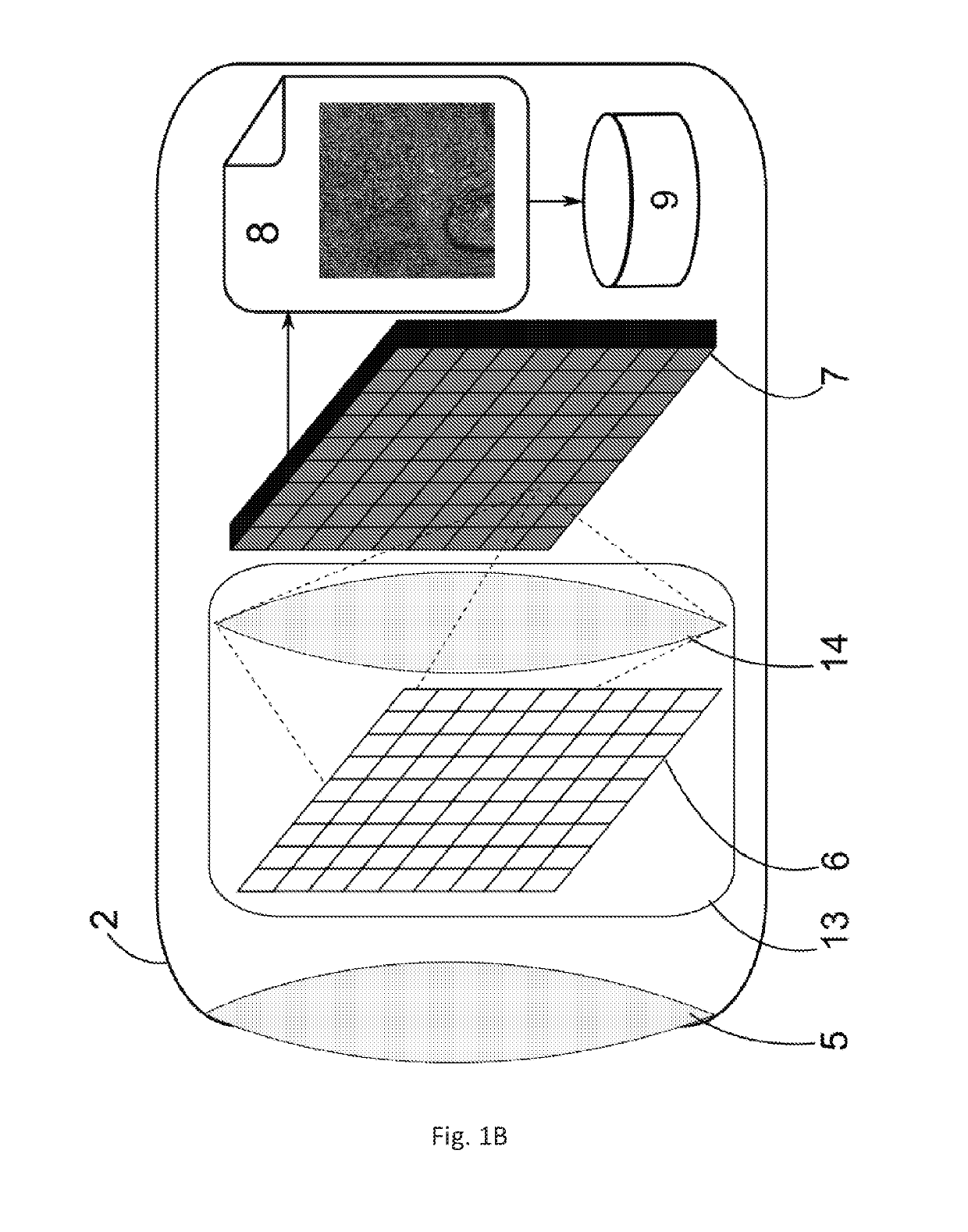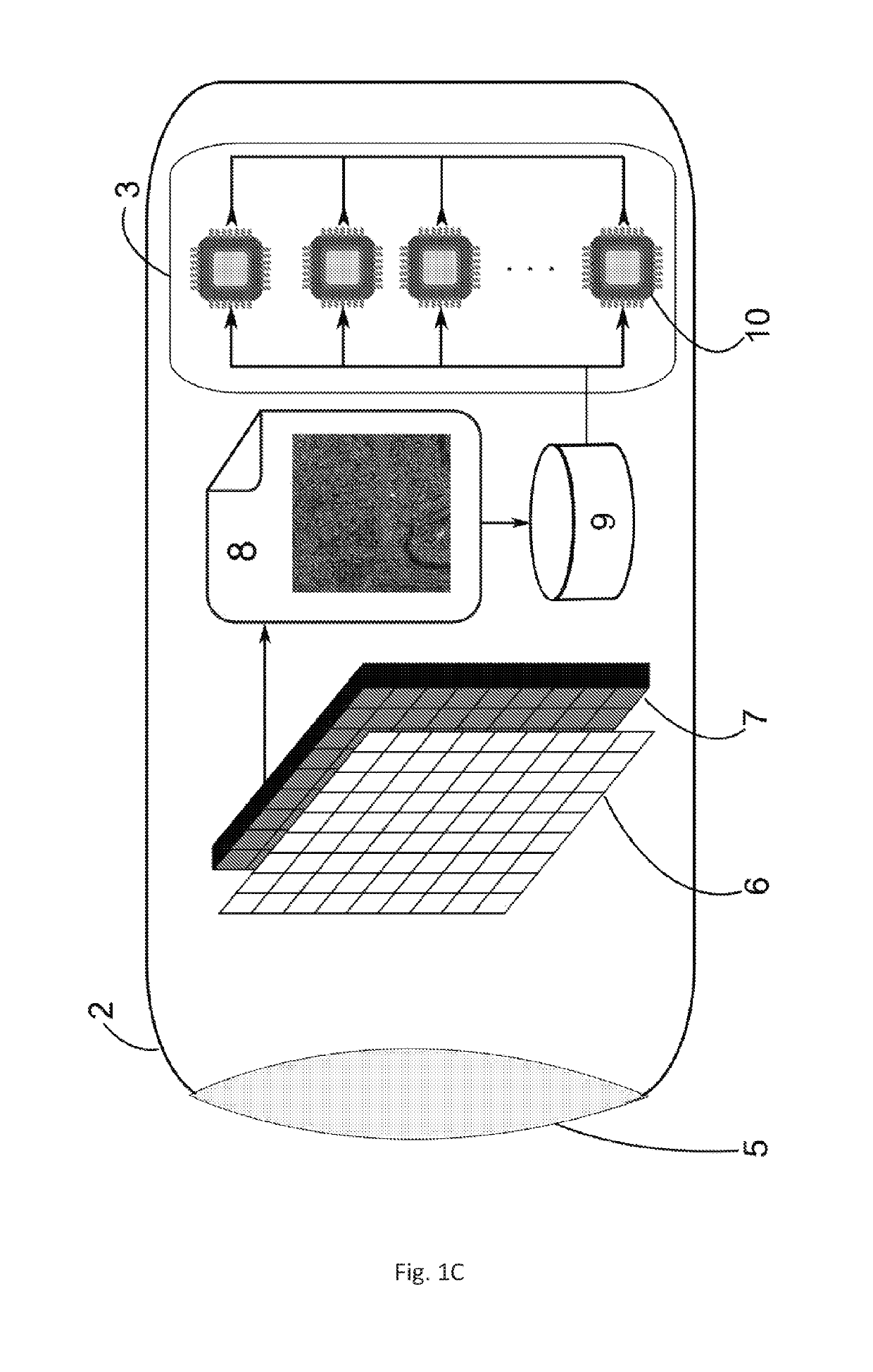Compact multifunctional system for imaging spectroscopy
a multi-functional, compact technology, applied in the field of imaging spectroscopy, can solve the problems of compromising resolution, compromising spatial resolution, difficult acquisition of 3d hyperspectral imaging data, etc., and achieve the effect of increasing the spectral reconstruction quality of an imaged scen
- Summary
- Abstract
- Description
- Claims
- Application Information
AI Technical Summary
Benefits of technology
Problems solved by technology
Method used
Image
Examples
Embodiment Construction
[0059]In this section, we outline the advantages of the presented solution with respect to prior art and subsequently focus on the technical details pertaining to three major aspects of the invention, namely:[0060]1. the camera design and functionality;[0061]2. the spectral filter array design; and[0062]3. the reconstructor embodiments and preferred implementation.
[0063]The present invention improves upon prior art in multiple ways. With respect to spatial or spectral scanning spectral imaging systems, the present invention overcomes the need to scan, sampling the imaged scene simultaneously while providing similar resolution. Due to the extremely short optical path of the present invention, a much smaller and lighter spectral image acquisition system can be built than those requiring spectrally dispersive elements. The reduced complexity of the optical and mechanical parts also significantly lowers the production cost when compared to spectral imaging systems with dispersive elemen...
PUM
| Property | Measurement | Unit |
|---|---|---|
| central wavelengths | aaaaa | aaaaa |
| central wavelengths | aaaaa | aaaaa |
| central wavelengths | aaaaa | aaaaa |
Abstract
Description
Claims
Application Information
 Login to View More
Login to View More - R&D
- Intellectual Property
- Life Sciences
- Materials
- Tech Scout
- Unparalleled Data Quality
- Higher Quality Content
- 60% Fewer Hallucinations
Browse by: Latest US Patents, China's latest patents, Technical Efficacy Thesaurus, Application Domain, Technology Topic, Popular Technical Reports.
© 2025 PatSnap. All rights reserved.Legal|Privacy policy|Modern Slavery Act Transparency Statement|Sitemap|About US| Contact US: help@patsnap.com



